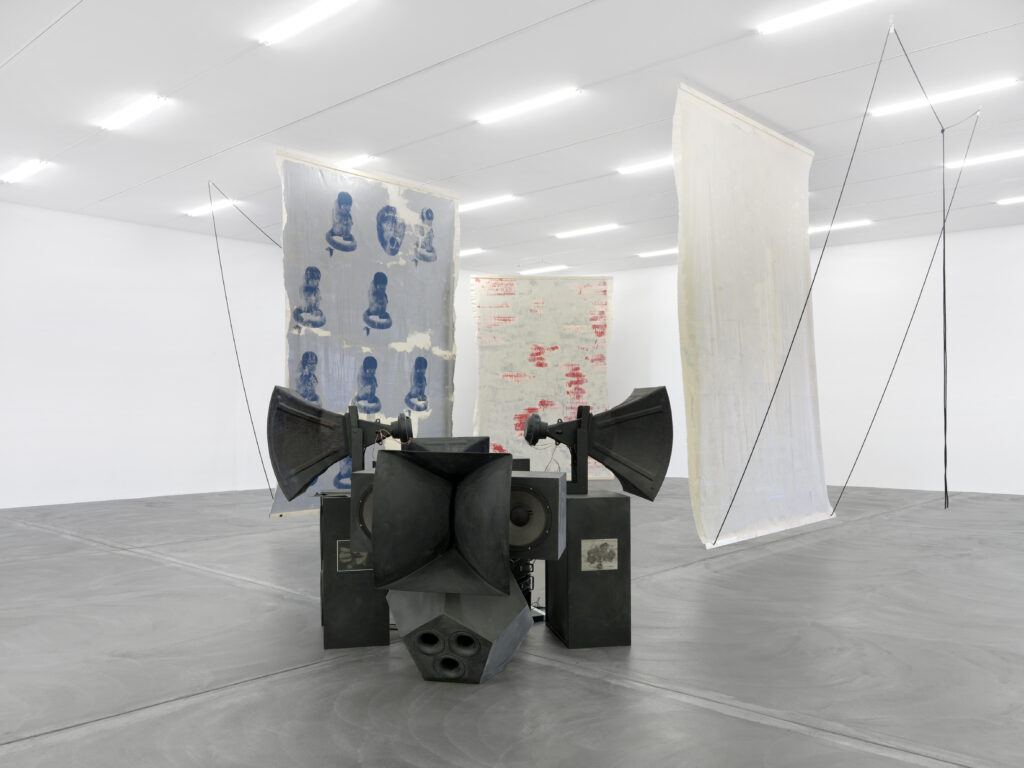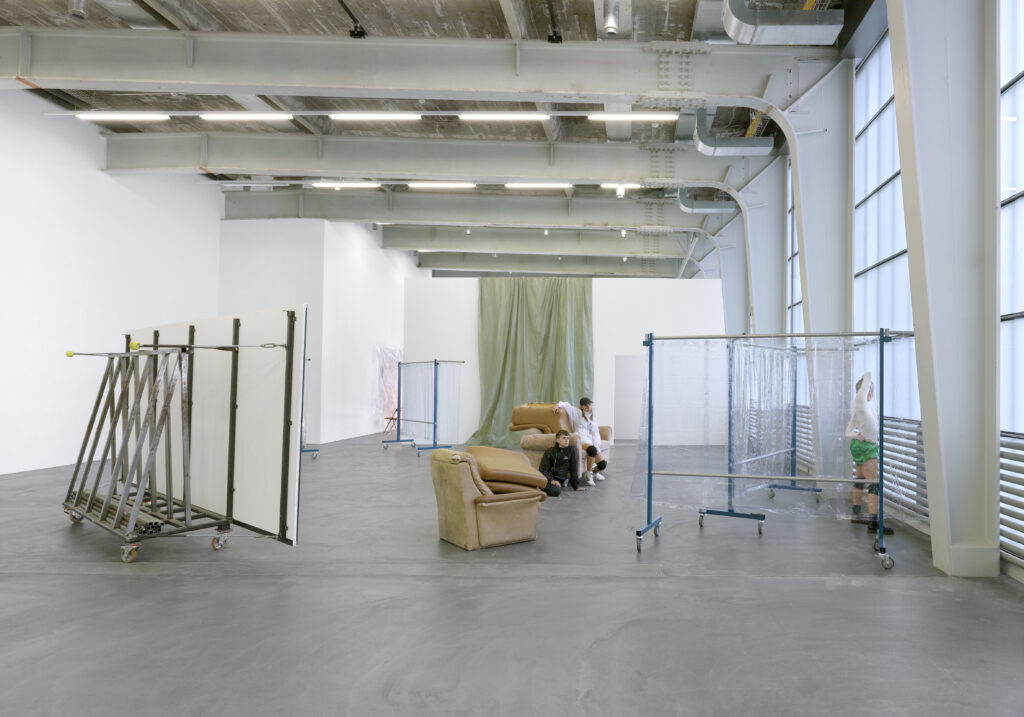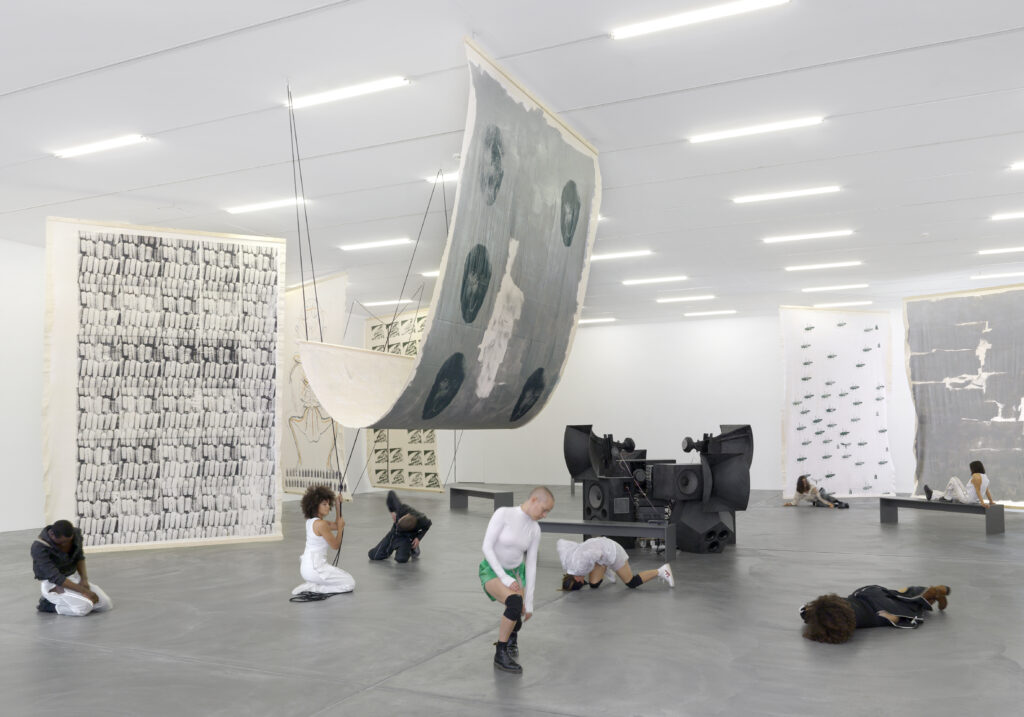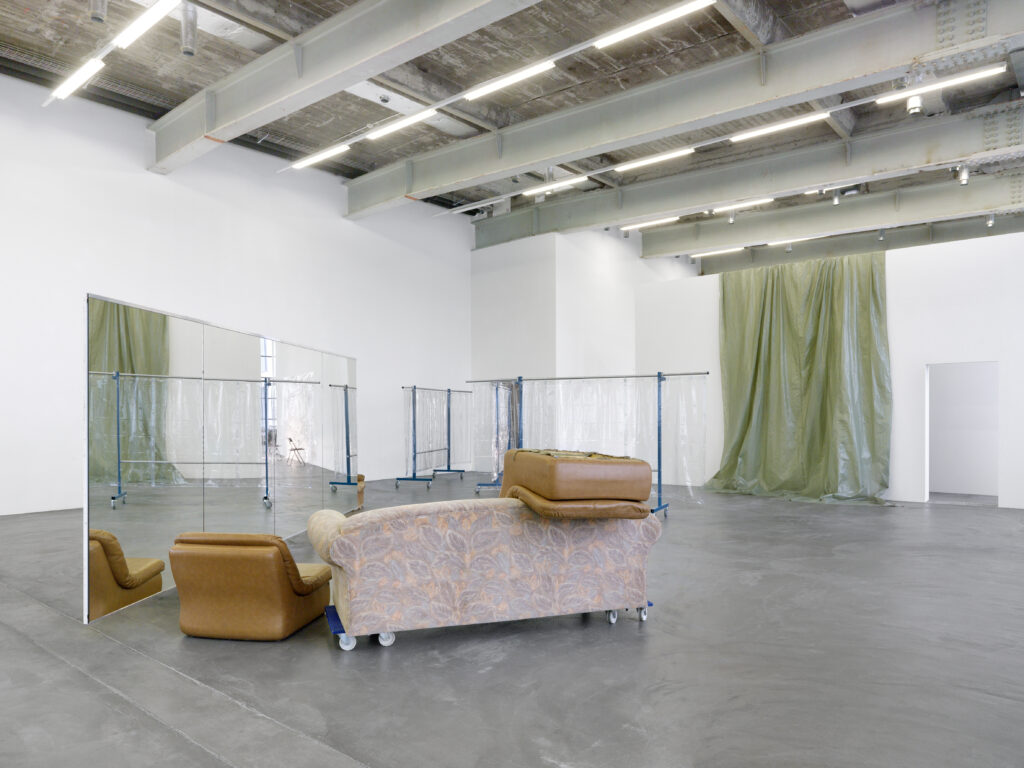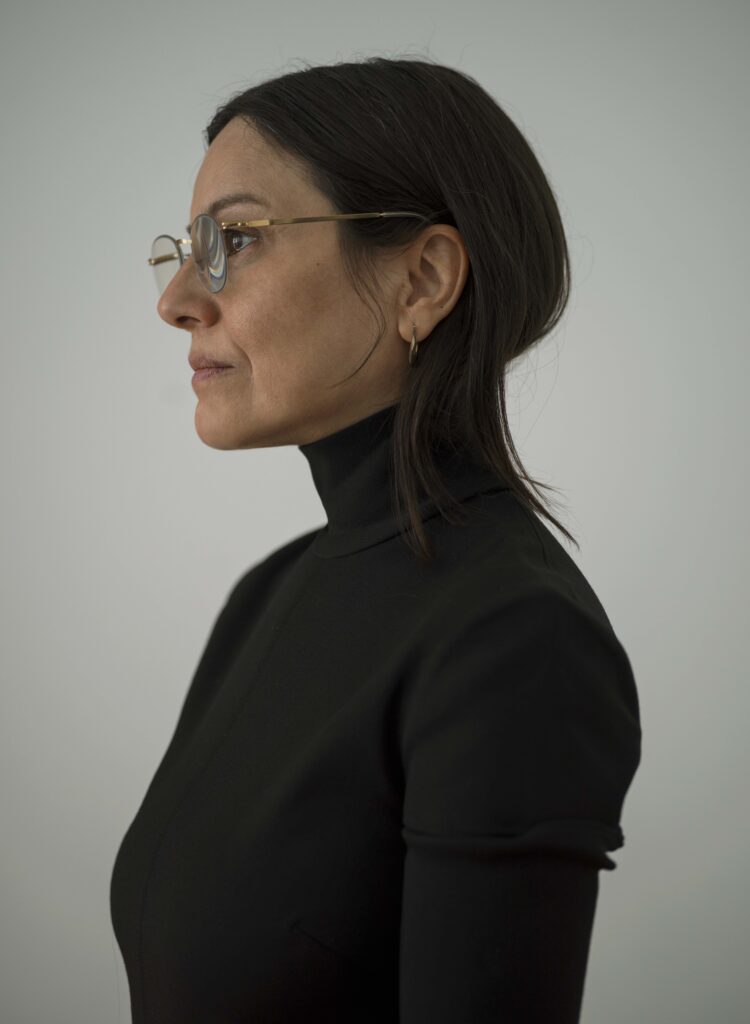Labour is a musical entity consisting of sound artist Farahnaz Hatam and percussionist Colin Hacklander. With backgrounds in post-tonal theory and electronic music they construct multilayered compositions in various domains—from fine arts and theatres to the context of experimental electronic music.
Hatam and Hacklander are concerned with expanding a spatial experience of perception through sound. The duo tries to open up acoustic space to the listener and wants to create a sense of both heightened and active listening. For example, in an expanded-concert work titled next time, die consciously (بیگانگی), that was staged at STRP festival, Dark Mofo Festival, and Berlin Atonal, Labour activated the respective spaces both onstage with a large PA and beyond the loudspeakers by placing drummers into the acoustic space. This “acoustic activation,” as they call their practice, both highlights unique instances of reverberation and the spherical nature of acoustic experience. In a compositional method of stochastic distribution, the duo uses chaotic functions to generate a non-grid based approach to rhythm.
As a part of Scalable Skeletal Escalator, an expansive, multidisciplinary installation by artist Isabel Lewis, Labour currently fills Kunsthalle Zurich with their complex sounds. On this occasion, Remo Bitzi caught up with the duo virtually to discuss their collaboration with Lewis, their compositional ideas, and the various contexts they find themselves in.
RB To start with, I’d be interested to learn about your relationship with Isabel Lewis. How did your collaboration start in the first place?
L Isabel is a long-term collaborator of ours, and the amount of works and depth of artistic connection we’ve reached is very special, to say the least. Our collaboration began in 2018 at Art Basel for Creative Time’s Basilea project on the Messeplatz where Colin led “sonic activations.” These activations created an opportunity to listen in an expanded sense, and also created an original score for multiple Basel drum “cliques,” engaging the old tradition of Swiss rudimental snare drumming and recontextualizing it within a stochastic composition of individual drum hits. The drummers were spread throughout the Messeplatz, which, sonically speaking, activated unique instances of reverberation, distance, and depth of sound over a large area. The drummers then reconvened to present specific traditional drumming from their repertoire.
Then in 2019 we created a work together with Isabel and Matthew Lutz-Kinoy for the Sharjah Biennial titled Untitled (inwardness, juice, natures), where sound guided the visitor experience through a series of shifting focuses over a large area that included a former ice factory and parking lot on the Gulf of Oman. The work included 10-channel sound, flautist, violinist, Qanun player, drummers, percussion ensemble, plus three large wireless speakers in-motion via automobiles. Later that year we made a piece together at Martin Gropius Bau in Berlin for Hieronymous Bosch’s Garden of Earthly Delights.
Scalable Skeletal Escalator is a continuation of our collaborative practice with Isabel. We are drawn to each other’s practices, perhaps to our mutual interest in choreography for spaces whether it be moving sound or bodies, to a dedication to creating new formats within established situations.
RB I like the idea of “choreography for spaces.” As far as I understand you implement this idea in different settings and in different fields—e.g. you work appears in exhibition spaces and other places related to fine arts, as well as at music festivals. I reckon the challenges you face in those fields are not always the same. Could you elaborate on that?
L Of course, each field comes with its own set of expectations, of codes, through tradition, through repetition, and familiarity—particularly the social situations of which provide a rich barometer for the possibilities of live art. By possibilities we mean the untouched zones that are possible in the interest of expanded formats, of new presentation modes within more-or-less articulated spaces or fields. Certainly the conditions and behind-the-scenes logistical challenges vary considerably from musical festivals, to museums or fine art spaces, to theatres, but without going into all that here… Anything understandably labeled a “challenge” is precisely the greatest provider of information when making artistic decisions. Whether it be profound differences in audience behaviour, acoustic treatment or lack thereof, time of day, presence of daylight or its absence… Especially interesting in the more visually-oriented situations are, curiously, the absence of a cultivated audio culture, of the ability to hear or retain complex or semi-complex forms or formations of sounds, of the ability to hear much at all… This truly is not meant as a gripe but as a significant empirical insight which then has a profound effect on the choices made in different contexts. Perhaps, this counts as a “challenge” as we have no desire to reduce complexity, but rather shift the focus for example in order to retain a kind of poetry.
RB What “challenges” did you face at Kunsthalle Zurich?
L Each work responds directly to the specific architectural space and situation, and each piece is unique to its frame of presentation and underlying concepts. In Scalable Skeletal Escalator, we worked with the acoustical challenges of the room such as reflections, resonant frequencies, and long reverberation times. The third floor exhibition space is particularly challenging since its original intended use is that of a visual presentation space. Instead of trying to eradicate the reflections we decided to use them: for example the sounds that bounce off of the walls and corners of the room in addition to the ones that emanate from the direction of the speakers themselves. It seems as if the walls themselves have been turned into speakers. This approach is made possible through the highly directional speaker technology made by Mo Stern and conceived by Dirk Bell. The speaker array is made up of two stereo pairs that face opposite diagonal corners of the room allowing one to mix and combine very dynamic sounds simultaneously. Also, we compositionally utilized the long reverberation times of the room by leaving specific durations of silence between certain attacks and decays.
RB How does the idea of “choreography for spaces” translate into formats that are not tied to one specific physical space, e.g. your radio show on NTS?
L In our monthly shows, we host our friends from Dakar—a geographical place Colin has spent much time in. The musical approaches featured are Mbalax and Sabar, both of which resonate deeply with our own compositional practice. The complex ideas of time and space in Senegalese drum tradition is in response to the acoustic characteristics of an outdoor performing space and large ensemble groups of instrumentalists. Although, it’s hard to hear this on a stereo mix down of a track recorded in the studio, it is nevertheless an important aspect of the compositional approach in this tradition.
RB Hearing all this makes me wonder how your working process looks like.
L Our working process tends to proceed in the following lineage, a bit of a hierarchy of importance for Labour: Firstly, consider the space, its architecture, and what it offers for sound, not what needs to be changed, but to understand the already-existing situation. Secondly, consider and design a compositional system, which tends to include how to spatialize sound through both instrument and loudspeaker positions, how to choreograph the movement of percussionist-performers throughout the space, or Farahnaz coding new systems in SuperCollider, a sound synthesis programming environment, to develop new musical systems and new digital instruments. Thirdly and finally comes the content, the layer that seemingly conveys more apparently any aesthetic leanings, which for us is significant, however less so than the previous layers.
RB What’s the role of your collaborators in that process? Or differently put: How did the process of creating the sound for Scalable Skeletal Escalator look like—did you get a briefing or was it more open, e.g. an exchange of ideas with Isabel and then you did your part rather autonomously?
L Working with Isabel is special also because of the autonomy involved. Through her research process, Isabel shares texts and readings that drive the concepts of a given work. This is an important step for us as, along with our understanding of each other’s practices. We find ways to interpret and engage with the texts within our studio practice which is based in traditions of computer music and algorithmic composition. In this type of collaborative process, Farahnaz creates the systems in SuperCollider with the concepts in mind. For example, in a text for Scalable Skeletal Escalator called How Forests Think by Eduardo Kohn, there is a story of a jaguar that advises how to not become prey by sleeping facedown, then a description of Runa pumas, these shape-shifting human-jaguars or were-jaguars. This served as inspiration to create hybrid voices using wave-sets, point cloud formations, and other processes on voice recordings in which the performers make an internal bodily journey and imagine the interiors of their own bodies. These texts became the sources of synthetic human-animal amalgamations, creations of mythological chimeric beings.
RB You said that you have no desire to reduce complexity. I can relate to that—I think that’s how I look at the world in a way. Obviously, this perspective is problematic too. When it comes to politics e.g. this could be interpreted as being opportunistic. And in the arts you could argue that this view could result in dilution. How do you take countermeasures?
L So for example in a purely musical composition where, presumably, the listener will hear the piece from beginning to end, we may be compelled to develop sonic phrases and motifs in a certain way. It could entail to develop macro-structures cyclically, which interestingly turns out to often be on a kind of theme-and-variation-kick, which is quite interesting not only for listener retention. Also, there exists the possibility to restructure musical pathways from this approach, which from a listener’s perspective feels like a restructuring of psychological and emotional possibilities, on one level.
In a museum or installation setting, for example, our works often focus on an articulation of space, on an activation of architectural qualities through sound both acoustic and electronic, with a dedicated interest in opening up acoustic space in the internal sense of a visitor. If time and space are the essential building blocks of any experience, then herein lies a great potential for altering the basis of an understood reality. Our next set of works in this context will go much further, to focus on the physical and material qualities of sound, and its effects on physical objects in a transformative way.
So yeah for us the best works have endless layers of interaction, layers of complexity that can be immediately tangible and totally dense at the same time. For us it’s about a sense of communion via a sense of alienation…
RB That sounds interesting! Can you be a bit more specific? And where can your work be seen/heard next?
L Let’s put it like this: elusive efforts towards a realization of dynamic autonomy in order to achieve eventual practical implementation of meta-jurisprudence. These works should be prepared by next year… Sensually, they focus on the physicality of sound and specific objects and materials both natural and synthetic, on drawing parallels between the transformative potential experienced in both material and immaterial realms…
In the meantime, in the concert realm of our practice, we have a record coming out on 18 November, the first on our own imprint, Studio Labour. The piece is called nine-sum sorcery and features the great Kurdish/Persian singer Hani Mojtahedy.
—
Scalable Skeletal Escalator is up and running until 8 November at Kunsthalle Zurich.
nine—sum sorcery by Labour feat. Hani Mojtahedy is out on 18 November; pre-order on Bandcamp.
…and don’t forget to follow Labour on Instagram.
